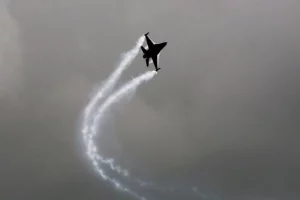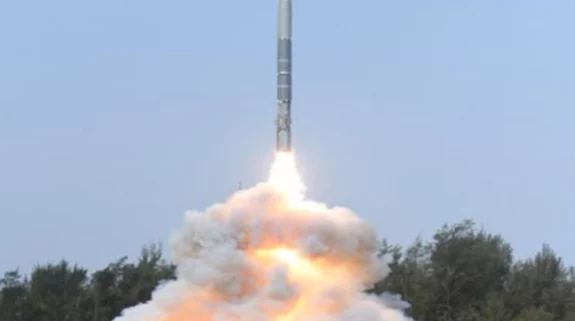China secretly tested a nuclear-capable hypersonic missile in August that circled the globe to get to its target, demonstrating an advanced space capability that caught US intelligence by surprise, according to a report in the Financial Times newspaper.
Five people familiar with the test said the Chinese military launched a rocket that carried a hypersonic glide vehicle which flew through low-orbit space before cruising down towards its target.
Although the missile missed its target by about two-dozen miles, the test showed that China had made astounding progress on hypersonic weapons and was far more advanced than US officials realised, the FT report said.
The China Academy of Launch Vehicle Technology, which oversees launches, on July 19 said on an official social media account that it had launched a Long March 2C rocket, which it added was the 77th launch of that rocket. On August 24, it announced that it had conducted a 79th flight.
Also read: China building a second nuclear missile silo field in Xinjiang, say US scientists
But there was no announcement of a 78th launch, which sparked speculation among observers of its space programme about a secret launch.
Hypersonic weapons, including glide vehicles are launched into space on a rocket . But after that, they orbit the earth under their own momentum.
The Pentagon did not comment on the report but expressed concern about China. “We have made clear our concerns about the military capabilities China continues to pursue, capabilities that only increase tensions in the region and beyond,” said John Kirby, the spokesperson. “That is one reason why we hold China as our number-one pacing challenge.”
Along with China, the United States, Russia and at least five other countries including India are working on hypersonic technology.
Hypersonic missiles, like traditional ballistic missiles which can deliver nuclear weapons, can fly at more than five times the speed of sound.
But ballistic missiles fly high into space in an arc to reach their target, while a hypersonic missile flies on a trajectory low in the atmosphere which is difficult to detect on a radar and can reach a target more quickly.
Crucially, a hypersonic missile is manoeuvrable making it harder to track and defend against. A ballistic missile on the other hand has a fixed trajectory.
While countries like the United States have developed systems designed to defend against cruise and ballistic missiles, the ability to track and take down a hypersonic missile is still not clear.
Taylor Fravel, an expert on Chinese nuclear weapons policy who was unaware of the test, said a hypersonic glide vehicle armed with a nuclear warhead could help China “negate” US missile defence systems which are designed to destroy incoming ballistic missiles. “Hypersonic glide vehicles . . . fly at lower trajectories and can manoeuvre in flight, which makes them hard to track and destroy,” said Fravel, a professor at the Massachusetts Institute of Technology. Fravel added that it would be “destabilising” if China fully developed and deployed such a weapon, but he cautioned that a test did not necessarily mean that Beijing would deploy the capability.




















